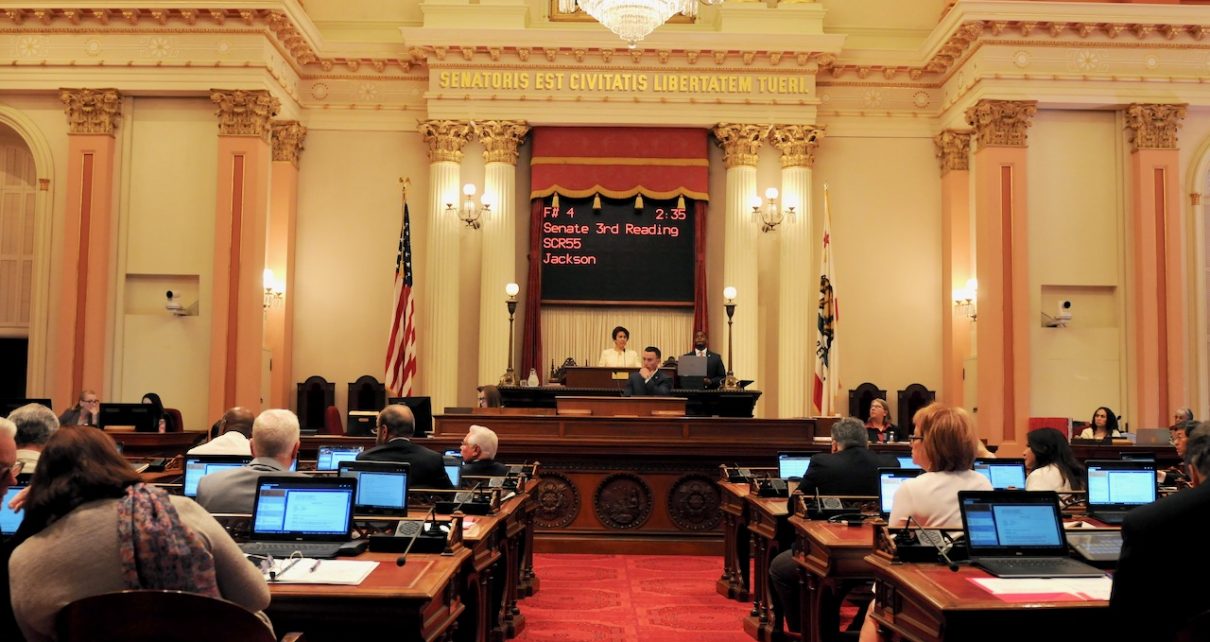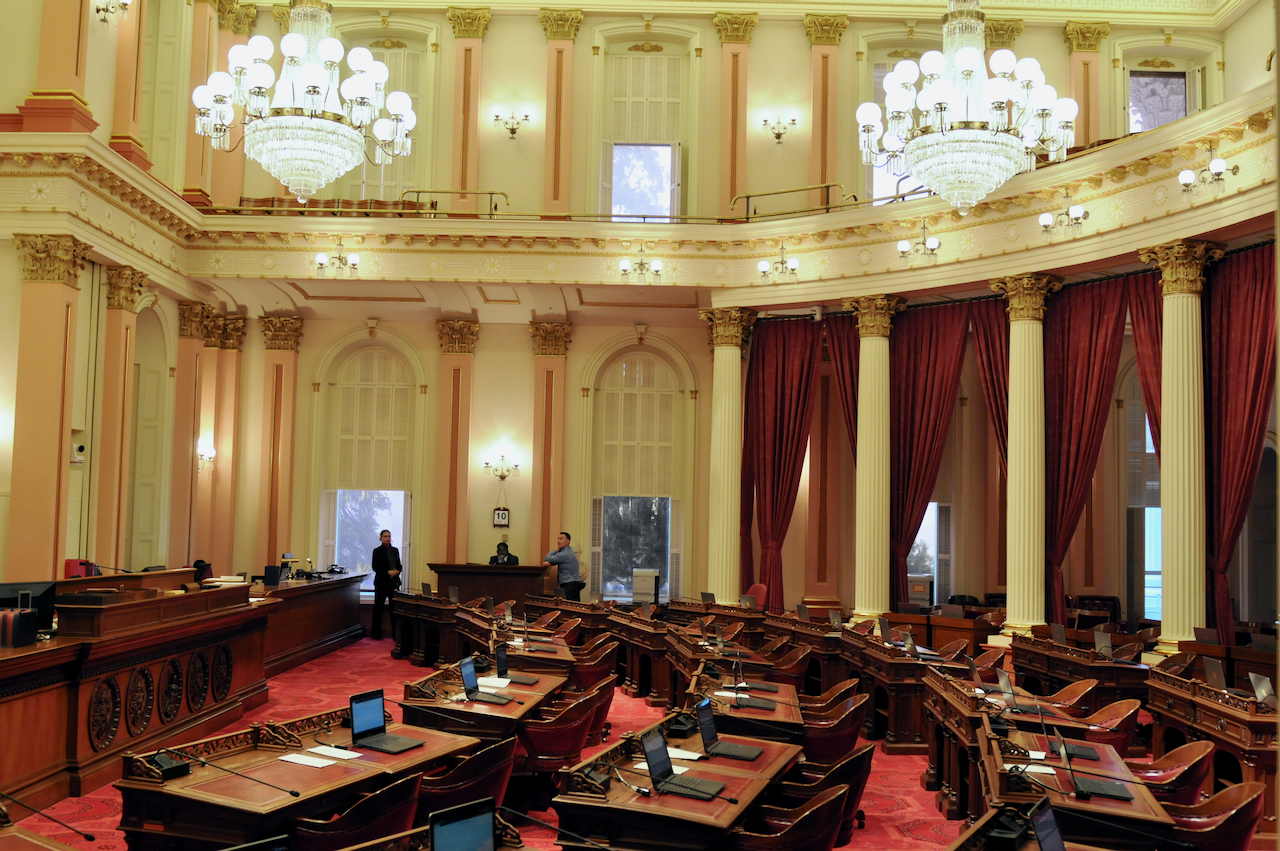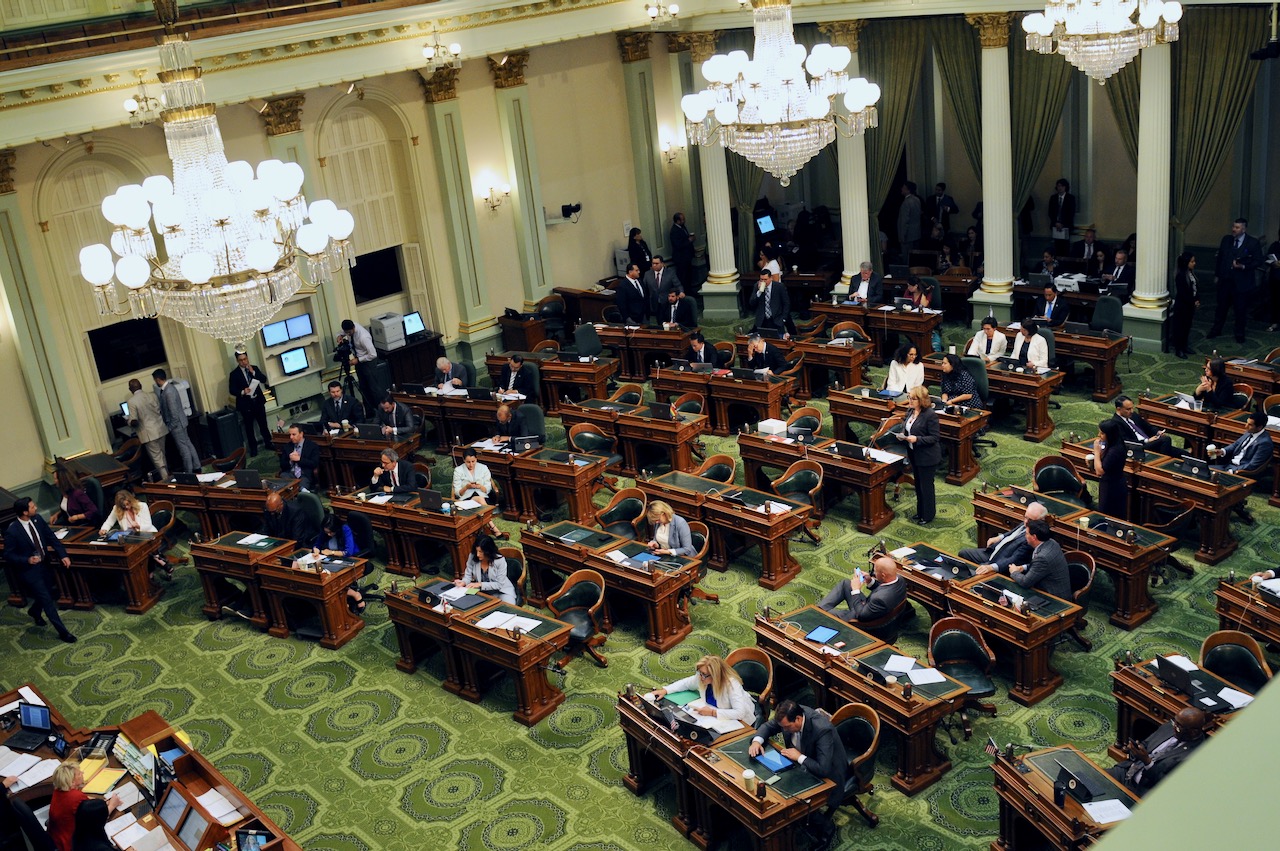
California State Senate. (Photo: Kevin Sanders for California Globe)
Why Are Conference Committees Rarely Used in the California Legislature?
Even the annual budget conference committee has effectively been eliminated in recent years
By Chris Micheli, October 11, 2022 6:29 am
In the past, the California Legislature used conference committees as a regular part of the legislative process. However, despite extensive rules and procedures for their use, the conference committee in the California Legislature is largely nonexistent today. Why is that? And what did the conference committee used to do?
According to the Office of Legislative Counsel, a conference committee is “a joint Assembly and Senate committee composed of six legislators, three from each House.” The purpose of a conference committee is “to reconcile differences between the Assembly and Senate versions of a measure.”
With a conference committee, the three Assembly conferees are chosen by the Speaker of the Assembly, while the three Senate conferees are chosen by the Senate Committee on Rules. The successful work product of a conference committee is the production of a “conference report,” which specifies the amendments that were agreed upon by a majority of a conference committee.
A conference report requires at least two Members from each House to agree on the conference report in order for the report to be considered by the Assembly and Senate for a single floor vote of each house, without any amendments being able to be made to the conference report. And, there is no policy or fiscal committee hearing on the conference report.
What causes a conference committee to be formed? It is whenever the Senate or Assembly refuses to concur in the other house’s amendments. As explained by Joint Rule 28, which is titled “When Senate or Assembly Refuses to Concur,” in Subdivision (a): “If the Senate (if it is a Senate bill) or the Assembly (if it is an Assembly bill) refuses to concur in amendments to the bill made by the other house, and the other house has been notified of the refusal to concur, a conference committee shall be appointed for each house in the manner prescribed by these rules.”
This explanation leads us to the answer to the question posed at the outset: Conference committees are rarely used in the California Legislature because the house of origin rarely “non-concurs” in the other house’s amendments. In many instances, the house of origin is consulted regarding the other house’s amendments and will indicate well in advance if that bill, as amended by the other house, will not be well received when the bill returns to its house of origin.
Moreover, in a legislative body that is controlled by more than two-thirds by one party, it is rare that the house of origin does not concur in the other house’s amendments. And, concurrence votes (as well as non-concurrence votes) usually occur in the last few days of the legislative session, when there is very little or no time at all for a conference committee to be appointed, convened, and concluded in its work before the final adjournment for the year.
Even the annual budget conference committee has effectively been eliminated in recent years, first due to the pandemic, and now due to the tight timeline between the May Budget Revision and the June 15 enactment date required of the state budget. As a result, it has become rare for a conference committee to be convened in the California Legislature.
- Partition of Property in California - December 15, 2025
- Relief from Child Support Orders - December 14, 2025
- County Harbor Improvement - December 14, 2025




One thought on “Why Are Conference Committees Rarely Used in the California Legislature?”